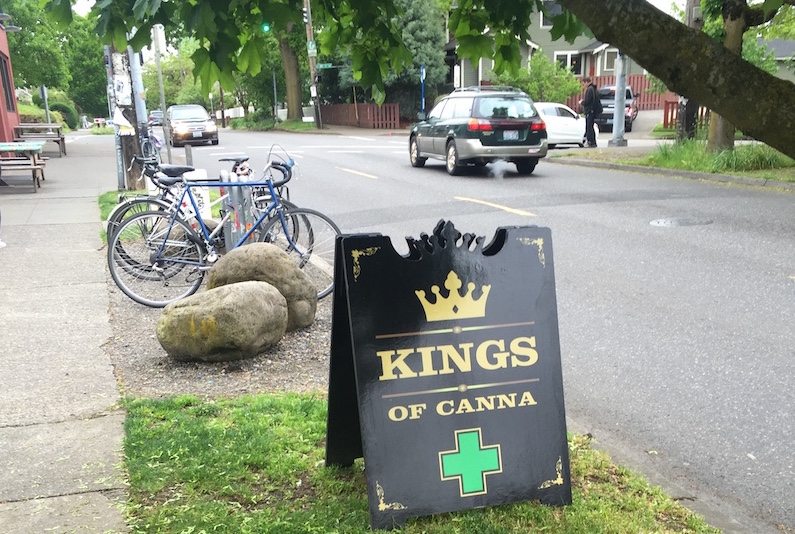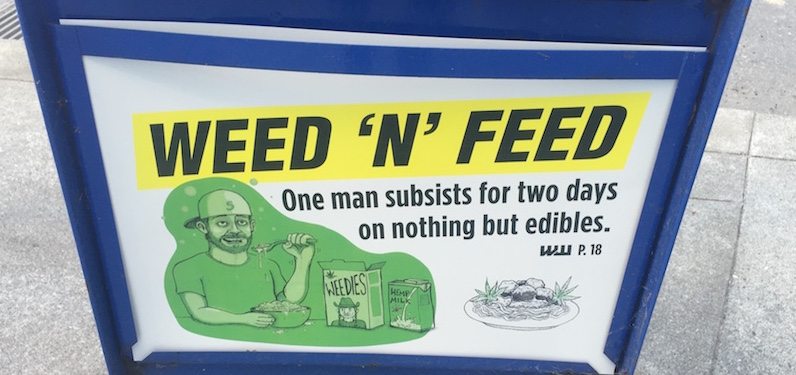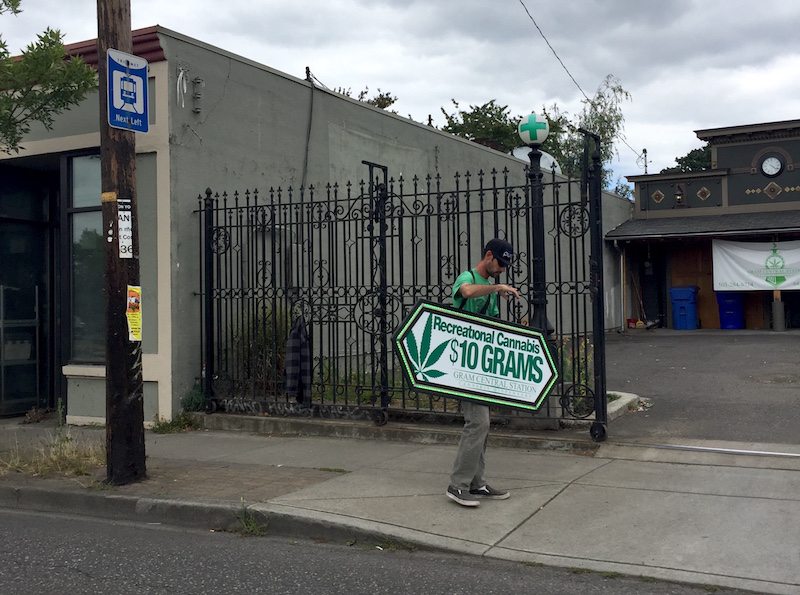Ten years ago, who could have imagined seeing billboards on public roads with clever advertisements for recreational drugs? We recently reported in the American Journal of Public Health about Oregon adults’ exposure to marijuana advertising following the start of recreational marijuana sales. Oregon voters legalized recreational marijuana sales and use among people age 21 and older in 2014.
Given the presence of this newly-legal market, preventing youth from starting to use is a high priority for the state. Tobacco and alcohol advertising exposure are associated with lower risk perceptions and increased use among young people. This is especially relevant given decreases in perceived harm of marijuana smoking among U.S. youth. We assessed exposure among 4,000 Oregon adults (including 18-20 year olds) through a statewide online survey in 2015-16. We asked if they had seen or heard ads for marijuana products or stores in their communities and what types of advertising they saw.
More than half of adults (55%) statewide saw marijuana advertising in the past month. Advertising was most often seen on storefronts (75%), streetside marketing like sandwich boards (67%), billboards (56%), magazines and newspapers (40%), and “sign wavers” on sidewalks (29%). Advertising exposure was similar by respondent age, sex, race/ethnicity, education, home ownership, metro area residency and marijuana use, but was higher among those living in counties with retail marijuana stores (57%) than in counties without (33%).


Our study suggests that exposure to marijuana advertising will be prevalent following legalization, and will not be limited to certain groups like marijuana users or older adults. A substantial number of people in counties without recreational marijuana stores still reported seeing marijuana advertising, suggesting that advertising may affect people living in adjacent communities.
Our study provides a glimpse into the advertising environment that states with legalization or plans to legalize can expect. Although First Amendment protections make advertising restrictions challenging, the issue has been presented as a legal “gray area” by some tobacco policy experts. And the American Public Health Association notes that restrictions aimed at adolescents and children will likely be allowed. States early to legalize can offer promising examples of common sense advertising regulations. For example, Washington State limits licensed retailers to two storefront signs and Colorado only allows billboards as fixed signs on a marijuana store’s zone lot.

Resources for monitoring and enforcement of advertising regulations are also important. For example, Oregon and Colorado allow marijuana advertising only through media channels when less than 30% of the audience is younger than 21 years; however, there is no clear description of how to determine that or what entity bears the burden of proof for ensuring that advertising is allowed.
Advertising works. Evidence from tobacco and alcohol use studies shows that advertising exposure will likely increase the appeal of marijuana for youth, and use. In states like Oregon that recently legalized marijuana, retailers and associated businesses will logically be enthusiastic about prominently promoting their businesses and products to those legally able to purchase them. In the absence of thoughtful policies to protect youth from exposure, those advertisements will almost certainly also reach and have an effect among young audiences.

All photos courtesy of Steven Fiala. Got dabs? billboard, May 2016 in Portland, Oregon. Kings of Canna sandwich board, April 2016, Portland, Oregon. Weedmaps billboard, January 2017, Portland, Oregon. Weed N’ Feed, June 2016, Portland, Oregon. Sign waver, June 2016, Portland, Oregon.














